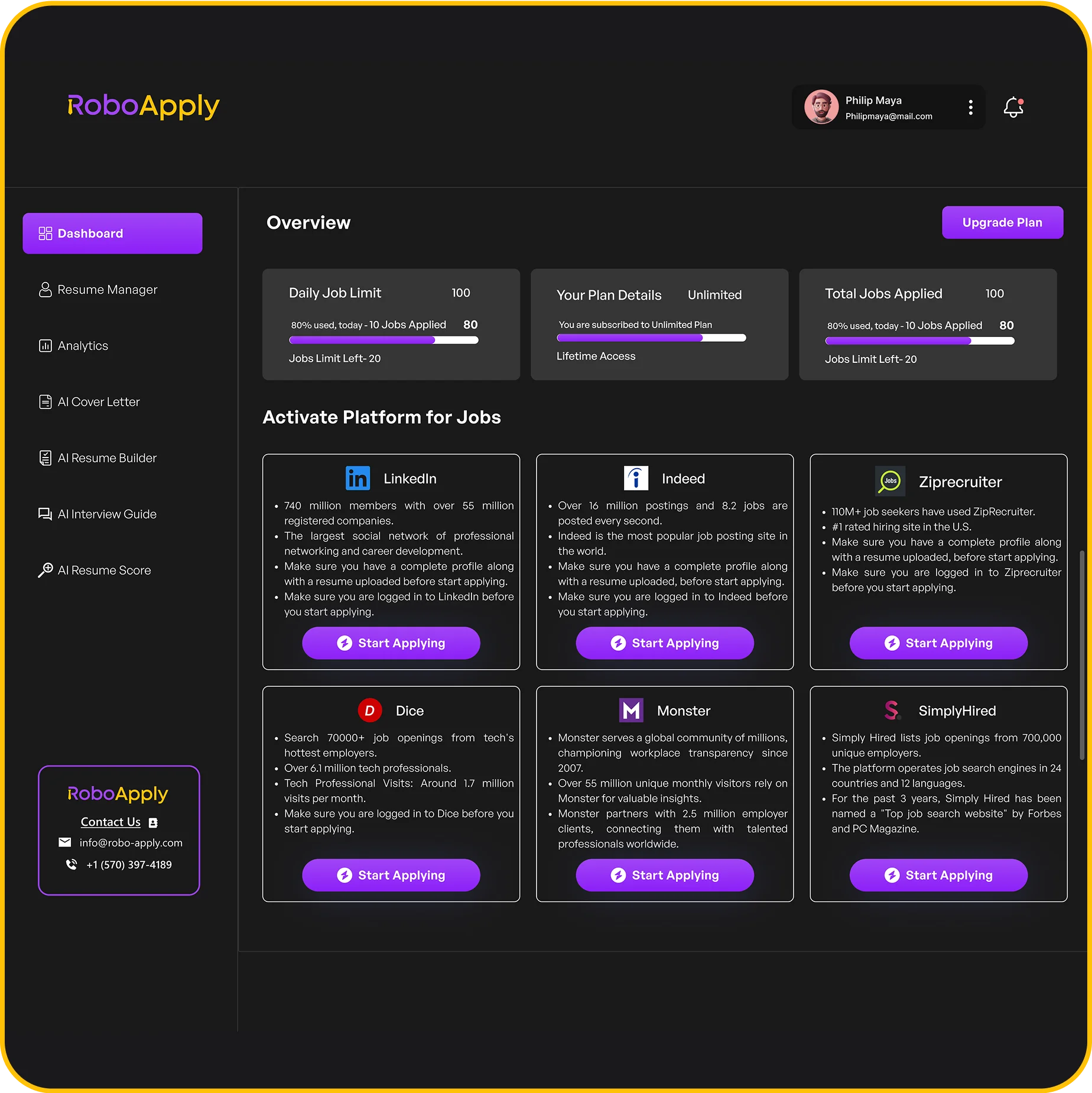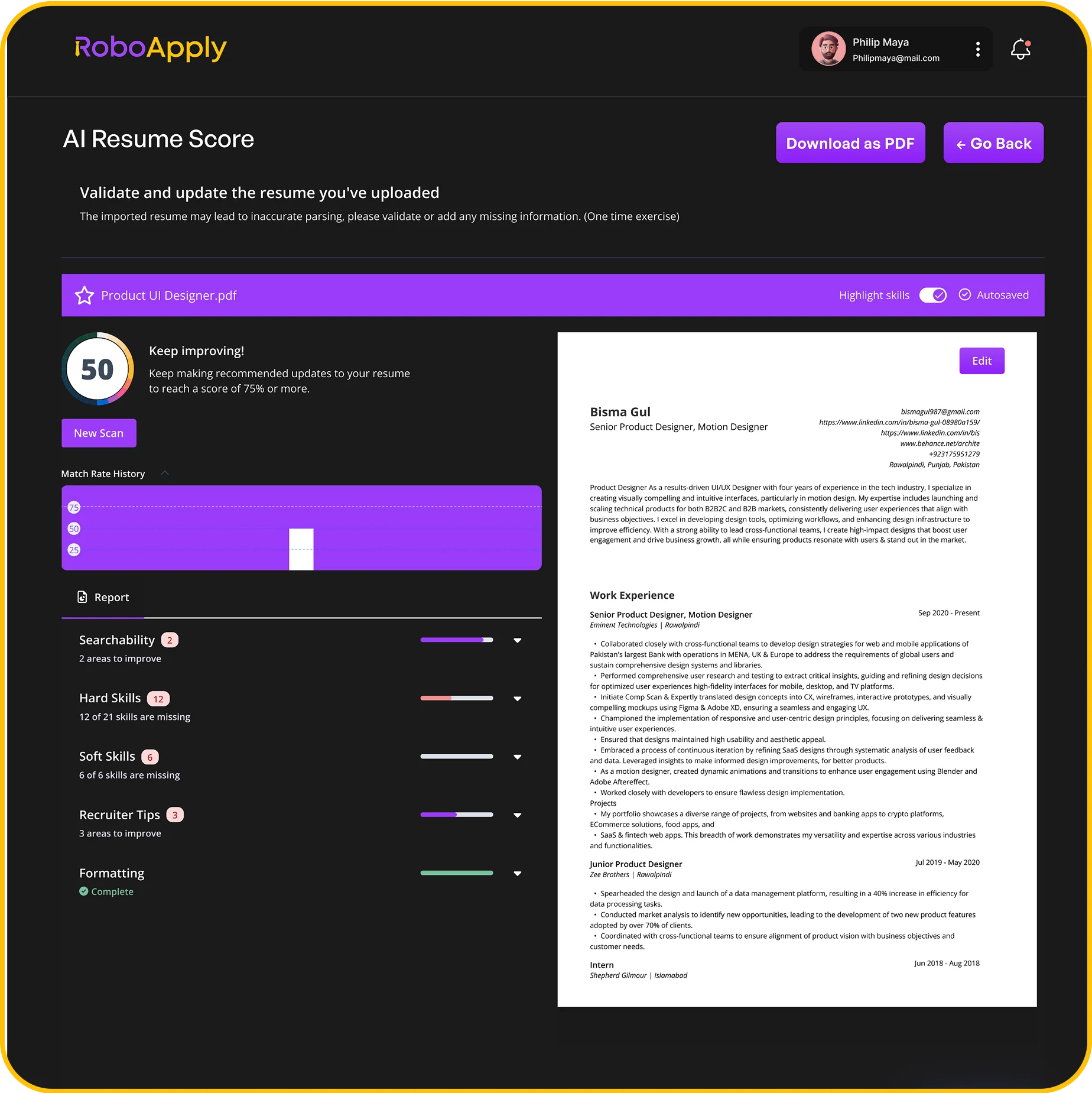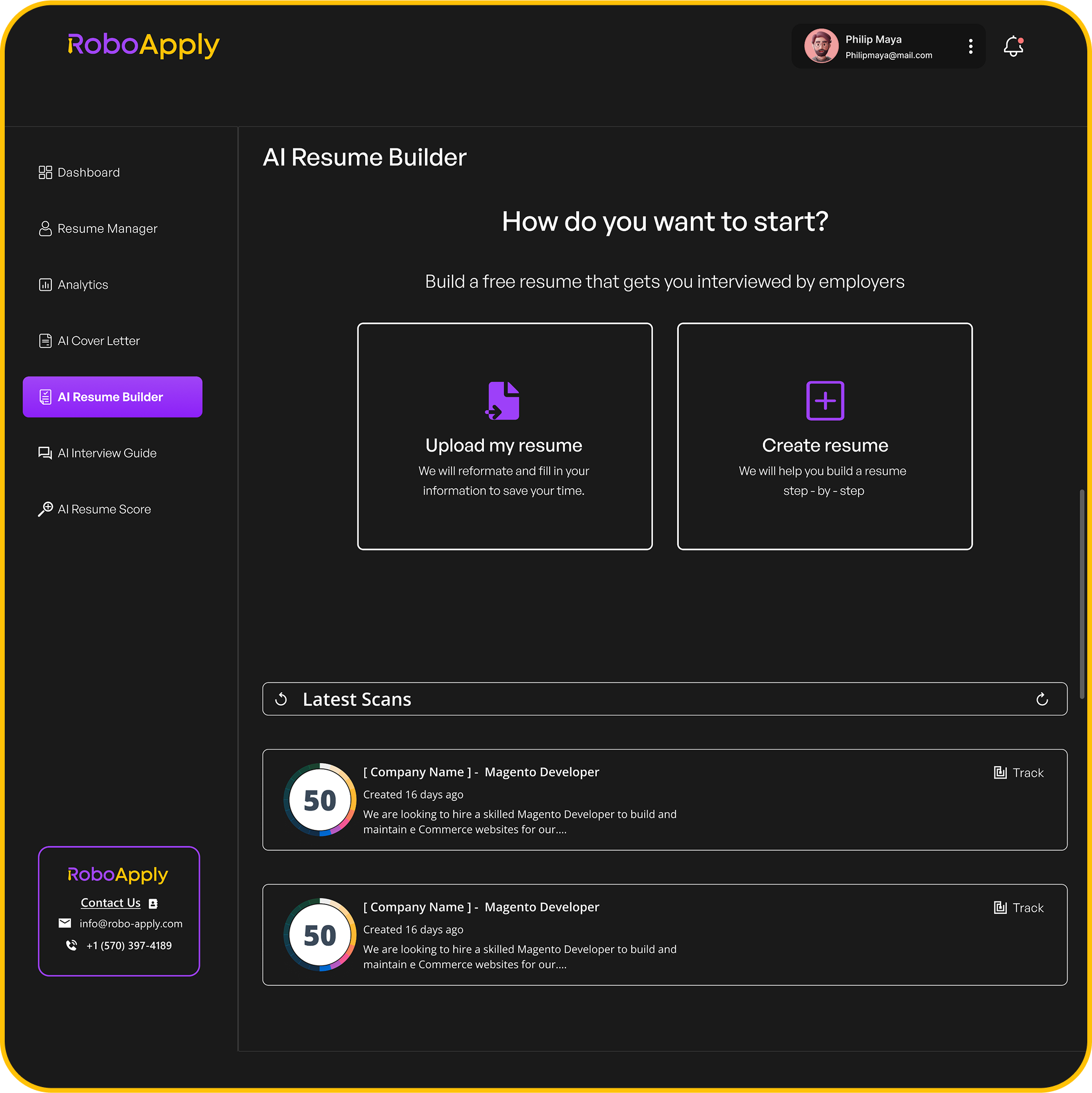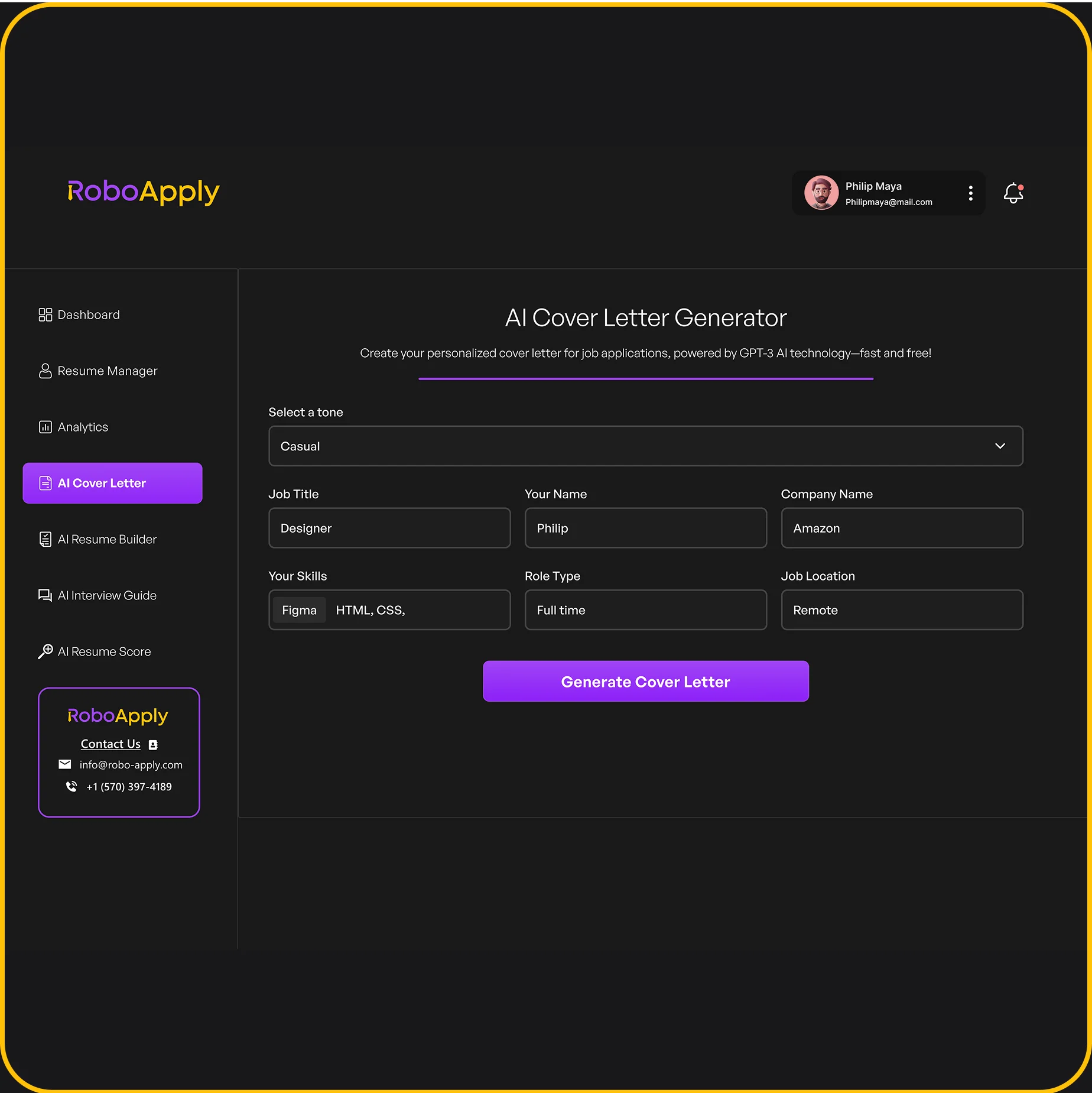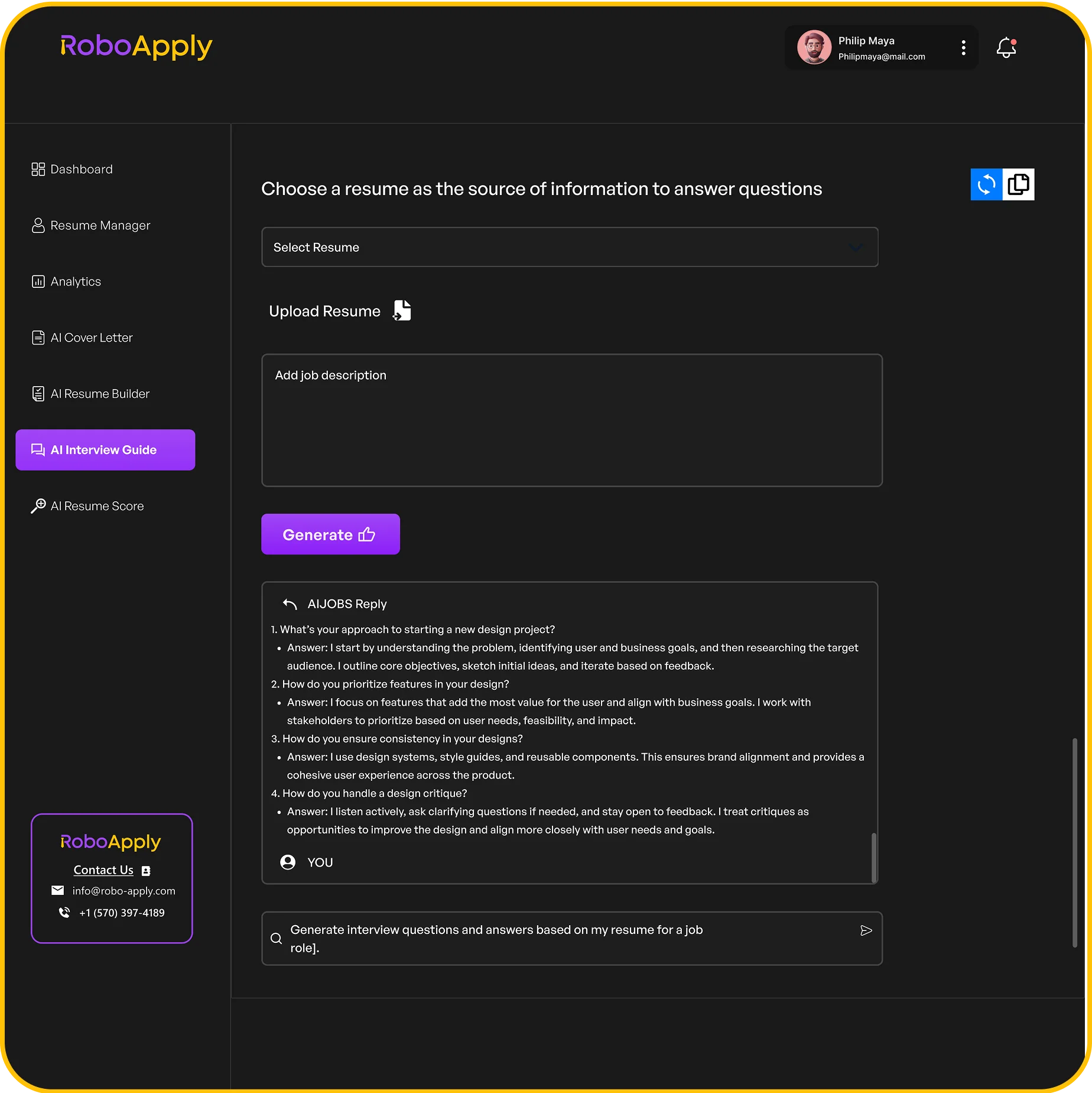So, you’re sitting there, staring at your draft, and thinking—wait, is this thing way too long? Or maybe it’s too short? Here’s the deal: A cover letter should be brief—ideally under a page, somewhere between 250 and 400 words, split into three or four paragraphs. That’s enough to get your story across without making a hiring manager’s eyes glaze over. If you go past a page, honestly, it’s probably too much, and you’ll risk losing their interest.
A well-written cover letter should highlight your strengths and experience, but keep it straightforward. Short paragraphs, clear points—just make it easy for someone to keep reading. If you want to double-check the numbers, here’s what the pros say about ideal cover letter length.
Key Takeaways
- Keep it to one page, 250-400 words is the sweet spot.
- Focused writing makes you stand out.
- Short paragraphs and simple formatting are your friends.
Ideal Cover Letter Length
A cover letter really needs to be clear and readable, especially in today’s job market. The right length helps you make a solid first impression and keeps the hiring manager focused on what actually matters.
Recommended Word and Page Count
The consensus? Short and direct wins. Aim for one page or less and stick to 250 to 400 words. That’s usually three or four tight paragraphs, each covering a different angle of your background.
If your letter drags on, it can feel overwhelming—hiring managers might just skim or skip it. Keeping things brief shows you get it: their time is valuable, and you know how to get to the point. Surveys back this up—most hiring managers want cover letters under a page, and some say even half a page is plenty in a crowded job market. More on that here.
Table: Recommended Cover Letter Length
| Metric | Recommendation |
|---|---|
| Word Count | 250 – 400 words |
| Paragraphs | 3 – 4 short |
| Pages | Half to one page |
How Length Impacts First Impressions
Length really does matter—at least here. If you send a cover letter that’s too long, it can look like you don’t know how to communicate efficiently. That’s not a great look, and it might make a hiring manager question your priorities.
A short, focused letter is easier to scan and makes you look professional. It also shows you can get your point across without rambling—always a good skill. When you nail it, a concise cover letter can help your resume rise to the top. Most HR folks say half a page to one page is ideal, so yeah, less is more.
Key Elements That Determine Length
The length of your cover letter really depends on what you need to say. Employers want to see why you fit the job, but they don’t want to wade through a wall of text. Give them what matters—skip the fluff.
Job Requirements and Description
What the job ad asks for will shape your letter’s length. If the position has a laundry list of requirements or wants both technical and soft skills, you might need a bit more space (but still, don’t go overboard). For example, if they want project management and specialized software, you’ll need to address both, but keep it punchy.
Things to keep in mind:
- How many must-have skills or qualifications are listed?
- Do they want examples or achievements?
- Are they asking for specific tasks, like leading teams or managing budgets?
Match your responses to the posting. Don’t waste space, and try not to spill onto a second page. More on this here.
Relevant Experience and Qualifications
How much you need to say depends on your background. If you’ve got direct experience, give a quick example for each of the main requirements.
Good moves:
- Use bullet points for your top skills or experience.
- Keep each one short and tie it right to what the job needs.
- Leave out random stories that don’t fit the role.
If you’re a close match, your letter can be tighter. If you’re switching fields, you might need a little more space to show off your transferable skills—but don’t go into your whole life story. Focus on what matters for this job. For more, check out this guide.
Cover Letter Structure and Sections
A cover letter’s got a basic structure for a reason—it helps you get your point across without losing the reader. Each section has a job to do, moving the reader from “Who is this?” to “Okay, let’s interview them.”
Heading and Contact Information
Start at the top: your name, address, phone, and a professional email. Then the date, then who you’re writing to—their name, title, company, and address.
Make sure your contact info matches your resume. That’s just basic professionalism (and it makes things easier for the hiring manager).
Oh, and check for typos. Seriously.
Sample layout:
| Applicant Name | Recipient Name |
|---|---|
| Address | Title |
| City, State, Zip | Company Name |
| Phone Number | Company Address |
| Email Address | City, State, Zip |
Salutation and Opening Paragraph
Kick off with a friendly but formal salutation—”Dear [Hiring Manager’s Name],” or just “Dear Hiring Manager,” if you can’t find a name. Using an actual name is always better, if possible.
The first paragraph should say what job you’re applying for and where you found it. Toss in a quick line about why you’re interested in the company or position.
Keep it tight—two or three sentences, tops.
Hiring managers notice when you get the details right and address the right person.
A strong opener tells them right away why they should care.
Body Paragraphs
Here’s where you show why you’re a fit. Each paragraph should stick to one or two main points—don’t try to cram in everything.
Show how your background matches the role, with a quick example or two.
Use keywords from the description, but make it sound like you, not a robot.
Hiring managers skim for the good stuff, so don’t bury it.
Bullets or bolded keywords can help, but don’t overdo it.
Usually, two short paragraphs or one longer one is plenty.
Closing Paragraph and Call to Action
Wrap it up by thanking them for their time.
Let them know you’re interested in moving forward—say you’re open to an interview or happy to chat more.
A typical sign-off: “I look forward to the opportunity to discuss how I can contribute to your team.”
Finish with “Sincerely” or “Best regards,” and your name.
A little gratitude goes a long way.
Formatting and Style Considerations
Your cover letter should look clean and professional—don’t make it a chore to read. Layout, spacing, and style really do matter.
Professional Format and Templates
Keep it neat. Most people use a simple template—one-inch margins, standard fonts (Arial or Times New Roman, 11 or 12 pt). Skip the wild fonts and colors.
Put your contact details, date, and the employer’s info up top, just like your résumé. Left-align the main text. Matching your résumé’s style keeps things consistent and makes life easier for hiring managers.
Templates are handy, especially if you’re in a rush or just want to be sure you’re not forgetting anything. Here are some good ones. But don’t just copy-paste—customize for each job.
Paragraph Count and Spacing
Three to four paragraphs is the sweet spot. Each should have a purpose—no filler. The first paragraph is your intro, the middle covers your skills or experience, and the last is your closer.
Leave a blank line between paragraphs so it’s not a wall of text. Shoot for one page, about 250 to 400 words. Good spacing makes it easier to skim—hiring managers appreciate that. Single spacing within paragraphs, double between, usually looks best.
Tailoring Cover Letters for Different Roles
Personalizing your cover letter isn’t just a nice touch—it’s what makes you stand out. Adjusting the length and focus helps you highlight the most relevant skills and experience for each job.
Internships and Entry-Level Positions
If you’re just starting out, you probably don’t have loads of work experience. That’s fine. For internships or entry-level gigs, focus on your education, volunteer work, projects, or any training that lines up with the job. Connect what you’ve done—schoolwork, clubs, whatever—to what the job needs.
A simple structure works:
- Say who you are and what job you want
- Explain why you like the company or field
- Show how your skills, class projects, or volunteer work fit the job
- End with a thanks and a call to action
For these roles, half a page is usually enough. Sprinkle in keywords and the company’s name to show you’ve done your homework—TopResume has some tips. Career counselors often say to focus on soft skills and your willingness to learn, not just technical stuff.
Experienced Professionals and Career Changes
If you’re an experienced professional, your cover letter should lean heavily on real work experience—think job history, specific achievements, things you’ve actually done. When you’re eyeing a similar position, it’s smart to connect the dots between your past work and what the job ad is asking for.
Switching careers? You’ll want to briefly touch on why you’re making the leap and, maybe more importantly, what skills you’re bringing along for the ride. Any extra training, certifications, or courses? Worth mentioning, for sure.
You might find this format handy:
- A strong opening that names the job and gives a little background
- A paragraph with major accomplishments and actual results
- A section tying your past experience or training to what this new gig needs
- A closing that says thanks and provides contact info
This way, it’s obvious how your background or career pivot fits the role. Career.io points out that tailoring your letter—using details from the ad and explaining your fit—pretty much always gives you a better shot at an interview.
Common Mistakes to Avoid With Length
Getting the length right is trickier than it seems. Too short, and you risk looking unprepared or uninterested; too long, and, well, nobody wants to read a novel when they’re reviewing a stack of applications.
Being Too Brief or Overly Detailed
If your cover letter is just a few lines, odds are you’re leaving out important stuff—like why you’re actually a good fit, or what you’ve done that matters. Recruiters can spot a half-hearted letter a mile away.
But then, if you go on and on, your main point gets lost. Most employers are happiest with about 250-400 words—roughly a page. If you’re cramming in every detail from your career, you’re probably overwhelming whoever’s reading.
A strong cover letter makes its case quickly but still shows you know how to communicate and get to the point.
Quick Tip:
- Stick to 3-4 short paragraphs.
- Highlight the big stuff—your best skills and wins.
- Trim anything that doesn’t add real value.
Repetition and Irrelevance
Repeating what’s already on your résumé? That’s a fast track to the “no” pile. If your cover letter just rehashes your bullet points, it’s not really doing its job. Same goes for tossing in random facts or stories that don’t relate to the job. Off-topic info just muddies the waters.
Every sentence should have a purpose—showing why you’re a great fit for this job, not just any job. Focus on what matters for this position. The more targeted your details, the stronger your case.
Tips for Concise and Effective Writing
A good cover letter stands out because it gets right to the point—no fluff, no wasted space. Hiring managers are busy, so they appreciate clear, direct language that actually lines up with what they’re looking for.
Making Every Word Count
Honestly, every line should have a clear purpose. Extra greetings or vague statements just bog things down. It helps to open with a short intro that says what job you’re after and maybe where you saw it.
Bullet points can be your friend—especially for skills or big achievements. Action verbs like achieved, led, or organized show you get things done. And really, try not to just repeat your résumé.
Read each line and ask, “Does this help my case?” If not, cut it. Keeping it under a page and using clear formatting makes your letter easier to scan, which is what most recruiters are doing anyway.
Showcasing Achievements Succinctly
The best cover letters don’t list every job you’ve ever had. They zero in on what matters for this role. A quick story or specific example that matches the job posting can work wonders. Like, “Managed a team of five during a system upgrade, finished two weeks early.” Numbers, job titles, results—these make your achievements real.
Keep each win to a sentence or two. Don’t just copy your résumé—explain how your skills will actually help in this new job. That’s what hiring managers want to see.
If there’s something cool or unique that connects you to the company’s mission, mention it. It could be the thing that gets you noticed.
Keeping the Reader Engaged
Mixing up sentence length and using active voice keeps your letter from sounding stiff or robotic. Short, punchy sentences are easier to read, especially if someone’s skimming.
Start strong—say something about the company or the specific job. Personalize your letter; avoid those generic lines everyone uses. Use the employer’s name if you can. Shows you care.
Break things up with short paragraphs. If there’s something you really want to highlight, try bold or italics. Tables can be handy for listing certifications or technical skills:
| Certification | Year |
|---|---|
| Project Management | 2022 |
| Data Analysis | 2021 |
Wrap up with a confident, polite line about what you’ll bring to the team. Good formatting and relevant content make it way more likely you’ll get that interview.
Frequently Asked Questions
Cover letters are still a big part of job and internship applications. There are some basic rules on length, formatting, and content that can help you stand out.
What is the ideal length for a cover letter for a job application?
Short and focused is best. Most folks say one page or about 250 to 400 words. That’s three or four short paragraphs—enough to cover the essentials without losing the reader. For more, check out these ideal cover letter length tips.
What key elements should be included in a cover letter?
A solid cover letter should introduce you, briefly explain why you want the job, highlight key skills that match the posting, and finish with a polite closing. Don’t just copy your résumé—add meaningful details that show why you’re right for this company or role.
Are double-spaced cover letters typically preferred by employers?
Not really. Single spacing is standard, with a blank line between paragraphs to keep things readable. Double spacing can look weird and eats up space you don’t have.
What is the recommended cover letter length for academic job applications?
Academic cover letters can run a bit longer, but they should still be clear and to the point. Usually, one page is enough, though a few schools might allow two pages if you’ve got extra teaching or research details to share.
For internships, how long should the submitted cover letter be?
Internship cover letters are short—just like those for full-time jobs. One page, three or four paragraphs. Make sure to say why you want the internship and mention any skills or school experiences that fit the role.
Is it advisable to submit a two-page cover letter, or is that considered excessive?
Honestly, a two-page cover letter? That’s probably pushing it for most jobs or internships. Hiring managers are usually looking for something concise—a single page is the sweet spot. If you go longer, there’s a good chance your letter won’t get read all the way through, and it might even make you seem a bit scattered. Most advice out there points to keeping things to a well-organized page.












